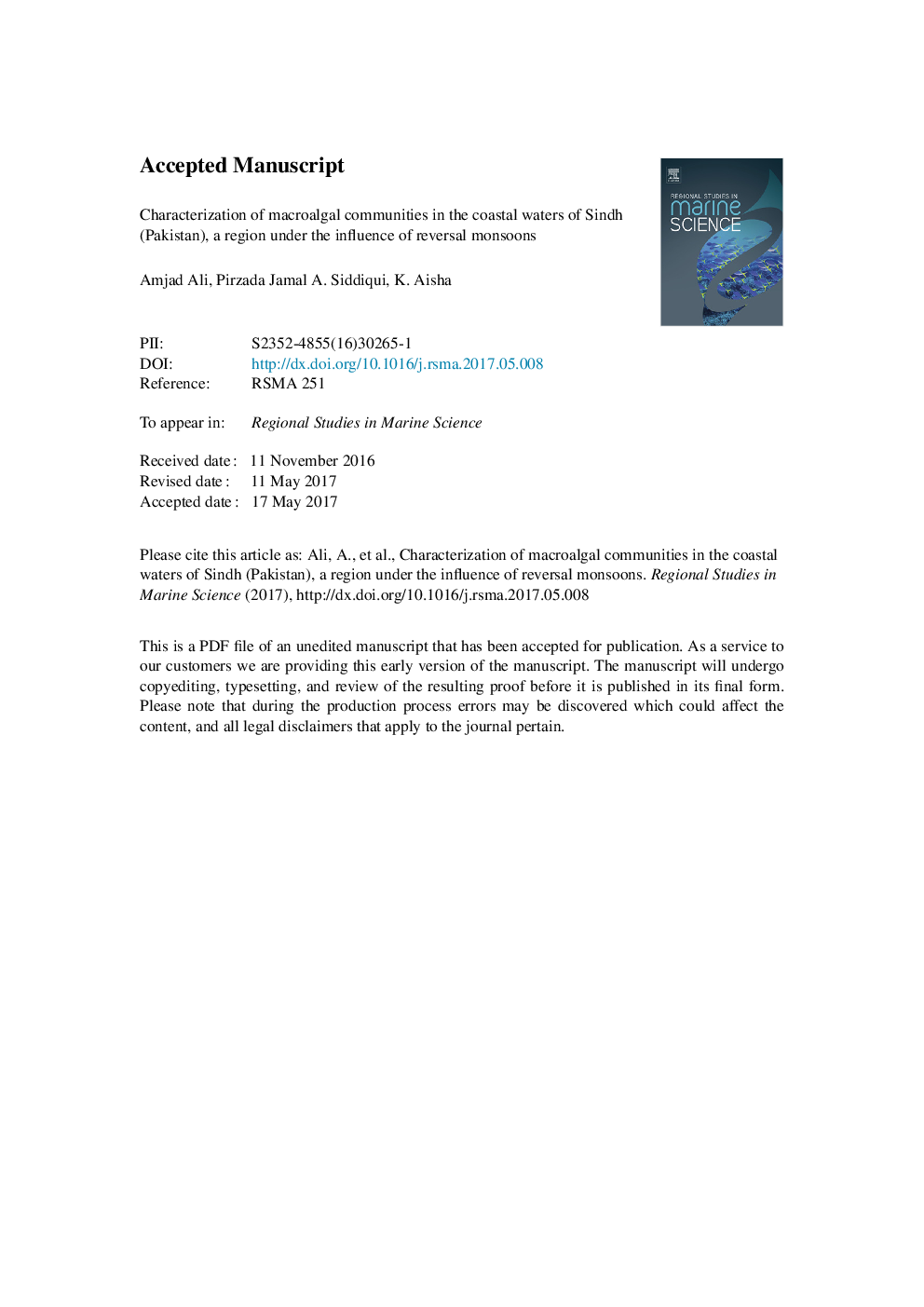| Article ID | Journal | Published Year | Pages | File Type |
|---|---|---|---|---|
| 5758208 | Regional Studies in Marine Science | 2017 | 33 Pages |
Abstract
Marine benthic seaweeds have a significant academic, biological, environmental and economic importance. Coastal waters of Pakistan have a rich algal resource due to nitrate fluctuations caused by convective mixing and up-sloping. Studies on seaweeds in Pakistan are mainly confined to intertidal areas or on the basis of drift samples with much emphasis on taxonomy and phycochemistry without an in-depth study of the ecology. In the present study, samples were collected by SCUBA diving from 5 dive sites. Quadrat techniques were used to determine the relative diversity and abundance of benthic macroalgal communities. A total of 36 species (16 Phaeophyceae, 12 Rhodophyta, and 8 Chlorophyta) were recorded. An increase in diversity and distribution patterns was noted from west to east ward. High diversity occurred at Hawks Bay followed by French Beach. The coral sites (northern sheltered site of Churna Island and Mubarak Village) had a less diversity. Very few recorded species had a restricted distribution (Yemen, Oman and India). One species was found endemic to Pakistan whereas the rest are widely distributed in the entire Indian Ocean, Atlantic and Pacific. Stunted growth of Sargassum species and changes in community structure were observed after the Cyclone 'NILOFAR'. Distribution and diversity patterns appeared to be linked with habitat type, topography, wave exposure and prevailing climatic conditions.
Related Topics
Physical Sciences and Engineering
Earth and Planetary Sciences
Oceanography
Authors
Amjad Ali, Pirzada Jamal A. Siddiqui, K. Aisha,
